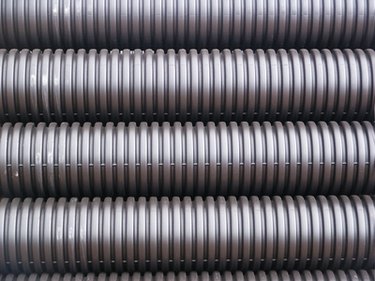
Anyone who works with steel pipe will be aware that it is generally sold in lengths of 21 feet. Although several theories exist as to why this is, the actual reason is most likely due to its manufacturing history.
Misconceptions
Video of the Day
One common misconception is that the standard length of 21 feet is the result of a metric conversion, while another suggests that it is to conform to the average length of a flat-bed truck. Neither of these theories is generally accepted.
Video of the Day
History
For much of its existence, steel pipe was produced using some variation of the bell and tong method, which utilized a heated strip of steel that was pulled through a cone-shaped hole to curve it into a tube. As it turned out, 21 feet was the length at which the steel could both hold a quality weld along the seam, and exhibit the necessary yield for forming the tube.
Other Sizes
Although 21 feet is still the standard, today, steel pipe can also be ordered at lengths of single random (18 to 25 feet), double random (38 to 40 feet) and specific cut lengths.